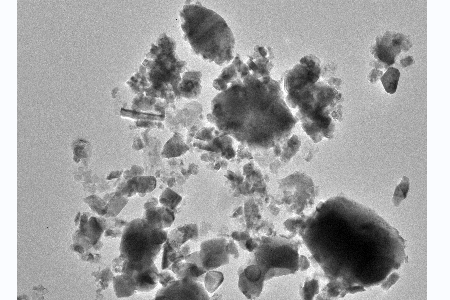Preparation and application of titanium carbide-based cermet
There are many synthetic preparation processes for titanium carbide-based cermets, each with its own advantages and disadvantages. In actual production, suitable processes can be selected according to different application requirements and price factors.
①Chemical vapor deposition (CVD)
This method is a process technology that deposits a solid thin film coating on the surface of a substrate by means of a space gas phase chemical reaction. Because the entire reaction of this method is based on thermodynamics, the CVD film has the advantages of good adhesion and coatingability, dense film layer, and high film-base bonding strength, which can satisfy the realization of not limited to TiC such as TiN, TiCN, TiBN Such as single-layer and multi-layer composite coatings.
The disadvantage of this method is that the processing temperature is relatively high (generally 900~1200℃). The high temperature will soften the steel matrix. After processing, it needs to be vacuum quenched again. The process is more complicated and the workpiece is also easy to deform, resulting in the bending strength of the matrix material. Decrease; and harmful waste gas and waste liquid will be produced during the preparation process, which is easy to cause industrial pollution. This conflicts with the green industry advocated by the country today, which also limits the comprehensive promotion and use of this law.
②Physical vapor deposition (PVD)
This method uses physical processes such as thermal evaporation, sputtering, glow discharge, and arc discharge to deposit the required coating on the surface of the substrate. Including evaporation coating, sputtering coating and ion coating technology. The latter two are currently more commonly used PVD technologies for preparing ceramic coatings.
Compared with CVD, this method is a green thin film preparation technology, there is no environmental pollution problem, the processing temperature can also be reduced to below 600 ℃, reducing the thermal impact on the workpiece, but as the temperature decreases, the bond strength of the deposited film will also be Lower than CVD film.
The PVD film layer usually has residual compressive stress, which is easy to crack and peel off due to brittleness. Furthermore, it belongs to linear processing, which has poor adhesion and coating properties. During the processing, the workpiece needs to rotate or swing, which increases the design difficulty and difficulty of the vacuum chamber. Problems such as ineffective coating.
③Liquid deposition
This method is a wet chemical film forming method. The basic principle is to drive the hydrolysis equilibrium movement of the metal compound through the ligand replacement between the ions in the solution, so that the metal oxide or hydroxide is deposited on the substrate to form a thin film coating . Since this method can be used for film deposition under low temperature/room temperature conditions, no heat treatment or expensive processing equipment is required during the preparation process, and the operation is simple.
The disadvantage of this method is that because it is essentially a reaction in an aqueous solution, there is an inconsistency between the solution concentration before and after the reaction during the deposition process, the liquid phase reaction has many influencing factors, and the industrial stability is not high.
④ Thermal spraying
This method refers to heating a certain linear or powdery material to a molten or semi-melted state through a heat source such as flame, arc or plasma, and accelerates the formation of high-speed droplets, which are sprayed to the substrate to form a coating on it. Strengthen or regenerate the surface performance of the material, play a protective role, and can restore the size of the parts caused by wear, corrosion or processing tolerances. The method includes plasma spraying, arc spraying, and flame spraying techniques.
⑤In-situ synthesis method
In-situ synthesis is that the second phase in the material or the reinforcing phase in the composite material is generated during the formation of the material, that is, it is not present before the preparation of the material, but is generated in situ during the preparation of the material; The two-phase reinforced particles are synthesized in situ, without pollution at the interface, and the second phase is evenly distributed, which can avoid the problems encountered by traditional powder metallurgy processes and smelting processes. With the development of in-situ composite technology, its application has expanded to metal-based and ceramic-based materials.
⑥Other synthesis methods
In addition to the above preparation processes, there are in-situ synthesis methods, fusion casting methods, powder metallurgy methods, mechanical alloying methods, thermal spraying, self-propagating high-temperature synthesis, high-density energy beam coating, sol-gel method, liquid EDM surface strengthening and other synthetic methods of medium discharge. In actual industrial production applications, the selection of the preparation method of the carbonized-based cermet composite material can be determined according to its own conditions and needs.
The application of titanium carbide-based cermet
①Cutting metal tools: The new titanium carbide-based cermet is a tool material that has developed rapidly in recent years. It has high comprehensive performance and its wear resistance is much higher than that of ordinary cemented carbide under the same cutting conditions. In high-speed cutting, the wear resistance is 5 to 8 times higher than that of YT14 and YT15 cemented carbide. At present, titanium carbide-based cermets have been made into various blades, which are used for precision boring of holes and "turning instead of grinding" and other finishing fields.
②Aerospace industry: TiC/Cu cermets prepared by high-temperature sintered framework infiltration process have good ablation resistance, and have the potential to be used as rocket throat linings and guard plates.
③Others: The metal-based ceramic lining synthesized by the centrifugal casting of SHS method can be used as anti-corrosion pipelines for the transportation of petroleum or chemical products and semi-products, and can also be used as anti-wear pipelines for mines, and mineral processing plants as slurry transportation pipelines. It can also be used in water pipelines with muddy water.
①Chemical vapor deposition (CVD)
This method is a process technology that deposits a solid thin film coating on the surface of a substrate by means of a space gas phase chemical reaction. Because the entire reaction of this method is based on thermodynamics, the CVD film has the advantages of good adhesion and coatingability, dense film layer, and high film-base bonding strength, which can satisfy the realization of not limited to TiC such as TiN, TiCN, TiBN Such as single-layer and multi-layer composite coatings.
The disadvantage of this method is that the processing temperature is relatively high (generally 900~1200℃). The high temperature will soften the steel matrix. After processing, it needs to be vacuum quenched again. The process is more complicated and the workpiece is also easy to deform, resulting in the bending strength of the matrix material. Decrease; and harmful waste gas and waste liquid will be produced during the preparation process, which is easy to cause industrial pollution. This conflicts with the green industry advocated by the country today, which also limits the comprehensive promotion and use of this law.
②Physical vapor deposition (PVD)
This method uses physical processes such as thermal evaporation, sputtering, glow discharge, and arc discharge to deposit the required coating on the surface of the substrate. Including evaporation coating, sputtering coating and ion coating technology. The latter two are currently more commonly used PVD technologies for preparing ceramic coatings.
Compared with CVD, this method is a green thin film preparation technology, there is no environmental pollution problem, the processing temperature can also be reduced to below 600 ℃, reducing the thermal impact on the workpiece, but as the temperature decreases, the bond strength of the deposited film will also be Lower than CVD film.
The PVD film layer usually has residual compressive stress, which is easy to crack and peel off due to brittleness. Furthermore, it belongs to linear processing, which has poor adhesion and coating properties. During the processing, the workpiece needs to rotate or swing, which increases the design difficulty and difficulty of the vacuum chamber. Problems such as ineffective coating.
③Liquid deposition
This method is a wet chemical film forming method. The basic principle is to drive the hydrolysis equilibrium movement of the metal compound through the ligand replacement between the ions in the solution, so that the metal oxide or hydroxide is deposited on the substrate to form a thin film coating . Since this method can be used for film deposition under low temperature/room temperature conditions, no heat treatment or expensive processing equipment is required during the preparation process, and the operation is simple.
The disadvantage of this method is that because it is essentially a reaction in an aqueous solution, there is an inconsistency between the solution concentration before and after the reaction during the deposition process, the liquid phase reaction has many influencing factors, and the industrial stability is not high.
④ Thermal spraying
This method refers to heating a certain linear or powdery material to a molten or semi-melted state through a heat source such as flame, arc or plasma, and accelerates the formation of high-speed droplets, which are sprayed to the substrate to form a coating on it. Strengthen or regenerate the surface performance of the material, play a protective role, and can restore the size of the parts caused by wear, corrosion or processing tolerances. The method includes plasma spraying, arc spraying, and flame spraying techniques.
⑤In-situ synthesis method
In-situ synthesis is that the second phase in the material or the reinforcing phase in the composite material is generated during the formation of the material, that is, it is not present before the preparation of the material, but is generated in situ during the preparation of the material; The two-phase reinforced particles are synthesized in situ, without pollution at the interface, and the second phase is evenly distributed, which can avoid the problems encountered by traditional powder metallurgy processes and smelting processes. With the development of in-situ composite technology, its application has expanded to metal-based and ceramic-based materials.
⑥Other synthesis methods
In addition to the above preparation processes, there are in-situ synthesis methods, fusion casting methods, powder metallurgy methods, mechanical alloying methods, thermal spraying, self-propagating high-temperature synthesis, high-density energy beam coating, sol-gel method, liquid EDM surface strengthening and other synthetic methods of medium discharge. In actual industrial production applications, the selection of the preparation method of the carbonized-based cermet composite material can be determined according to its own conditions and needs.
The application of titanium carbide-based cermet
①Cutting metal tools: The new titanium carbide-based cermet is a tool material that has developed rapidly in recent years. It has high comprehensive performance and its wear resistance is much higher than that of ordinary cemented carbide under the same cutting conditions. In high-speed cutting, the wear resistance is 5 to 8 times higher than that of YT14 and YT15 cemented carbide. At present, titanium carbide-based cermets have been made into various blades, which are used for precision boring of holes and "turning instead of grinding" and other finishing fields.
②Aerospace industry: TiC/Cu cermets prepared by high-temperature sintered framework infiltration process have good ablation resistance, and have the potential to be used as rocket throat linings and guard plates.
③Others: The metal-based ceramic lining synthesized by the centrifugal casting of SHS method can be used as anti-corrosion pipelines for the transportation of petroleum or chemical products and semi-products, and can also be used as anti-wear pipelines for mines, and mineral processing plants as slurry transportation pipelines. It can also be used in water pipelines with muddy water.

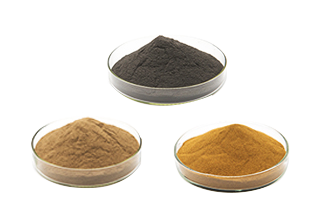
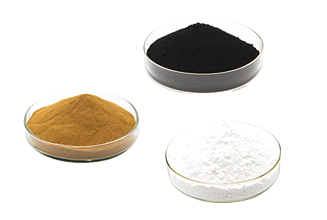
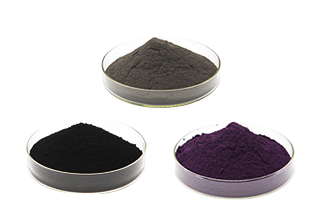
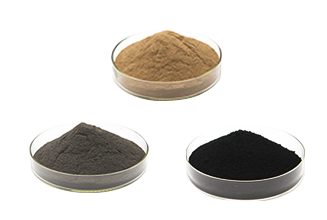
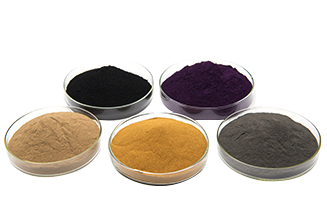
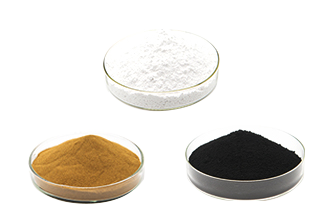
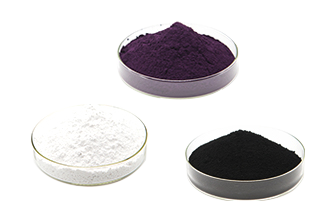



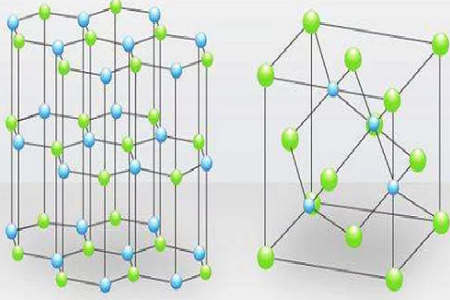
.jpg)
